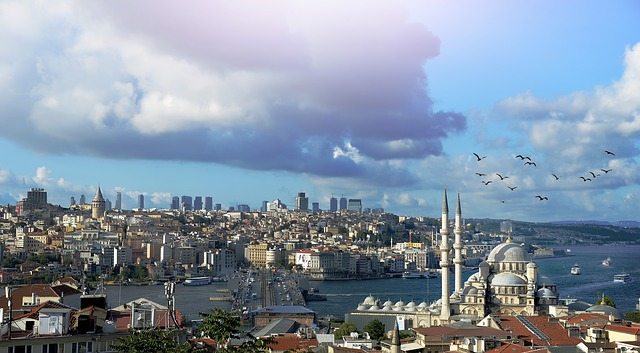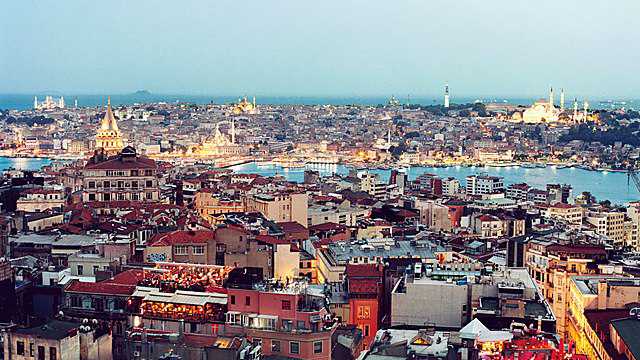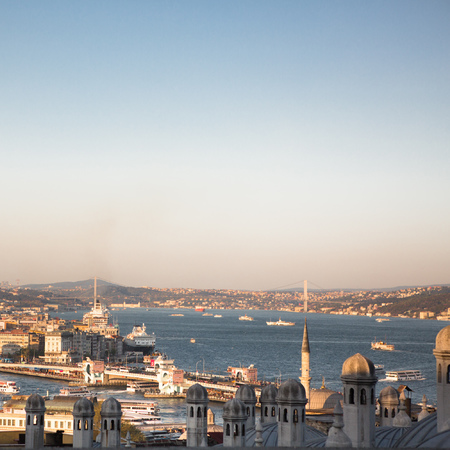Merhaba
I’m in Istanbul, in the second part of a two-week vacation with Linda. Last week we stayed almost completely in the old city, with our hotel being just 3 blocks from the Gülhane tram stop. This week we’re in the new part, on a hillside between Taksim Square and Kabataş. For a variety of reasons, I haven’t been as diligent about email and so on as I usually am while on vacation, and I’ve been completely unavailable for any except the most utterly urgent phone calls, of which there thankfully have not been any. But this evening, while Linda watches Muhteşem Yüzyıl in the other room, I’m in the mood to write a bit of travelogue, and post it in what among other things has become the most personal of my blogs.
Linda lived in Turkey for a while with her first husband, and speaks excellent Turkish. (In general, the Barlow women have an amazing talent for languages.)
If you’ve never been to Istanbul, it must be seen to be believed. From a hills and water standpoint, imagine 10 San Franciscos, but with many of the buildings being 500+ years old. The whole thing is wrapped around the Bosphorus, in which at any moment you can see 2-3 tankers, a whole lot of commuter ferries, and generally more ship traffic than I imagine can be found in any other similar expanse of water in the world (the Panama Canal area perhaps excepted). And there are plenty of places from which to get awesome views, most notably on the water itself. If you’re ever in Istanbul, seize every pretext you can find to be out on the water.
When it comes to great religious buildings, Istanbul may be my favorite city in the world, ahead of Rome, Paris, and even Kyoto. Reasons include:
There are a lot of them here, since in the Ottoman Empire there weren’t many ways for the rich and powerful to use their wealth except by endowing buildings, most notably mosques (in particular, they could pass little wealth on to their heirs). The Ottomans built feverishly for about 400 years.
Since Islam frowns on figurative art, the whole thing is very geometric, which I like.
Mimar Sinan, the Ottoman analogue to Michelangelo or Leonardo da Vinci, got along fabulously with his patrons. (Suleiman the Magnificent called Sinan the only person who had “never disappointed” him.) Those patrons had much of the wealth of the Ottoman Empire to play with. Consequently, he had huge budgets and staff, and built many beautiful things.
When the Turks conquered Constantinople, they found Hagia Sophia there, and developed much of their own style in mosques based on it. I think that style works beautifully on the outside of buildings just as on the inside, more than is the case for – for example – most Western cathedrals.
Many of Istanbul’s great buildings can still be seen from the outside, at a distance, more than is the case in any other city I can think of. (The hills are a big help with that.)
The standard list of “must-see” sights in Istanbul would probably start with:
Hagia Sophia.
The Blue Mosque.
Topkapi Palace.
They’re all great, but I’d put ahead of them:
The Süleymaniye Mosque (by Sinan). To see why, just do a Google image search on its name.
The Rüstem Pasha Mosque (also by Sinan). The big reason is the tiles, which – unlike in bigger mosques – are right in your face. Tiles are the greatest decoration in mosques, just as stained glass windows are in churches. I don’t find Rüstem Pasha quite as beautiful as Sainte-Chapelle in Paris – but the analogy isn’t far-fetched.
There also are several very nice tiled pavilions in Topkapi, but I’d put the Rüstem Pasha Mosque well ahead of any one of them.
Also on my mustn’t-miss list are:
The final room in the Turkish and Islamic Arts Museum, aka the Ibrahim Pasa Palace. It’s a crafts museum, of course, since they didn’t have much figurative art in the Ottoman Empire. The final room has what must be the greatest collection of rugs in the world, many of them around 30 feet long. Don’t miss it, even if you only have 20 minutes to spend. It’s extremely close to the Blue Mosque, and hence to Hagia Sophia as well.
The aforementioned boat ride(s).
Topkapi Palace and the Blue Mosque.
via Merhaba | Software Memories.
more: http://www.softwarememories.com/2012/09/19/merhaba-2/?utm_source=rss&utm_medium=rss&utm_campaign=merhaba-2





















